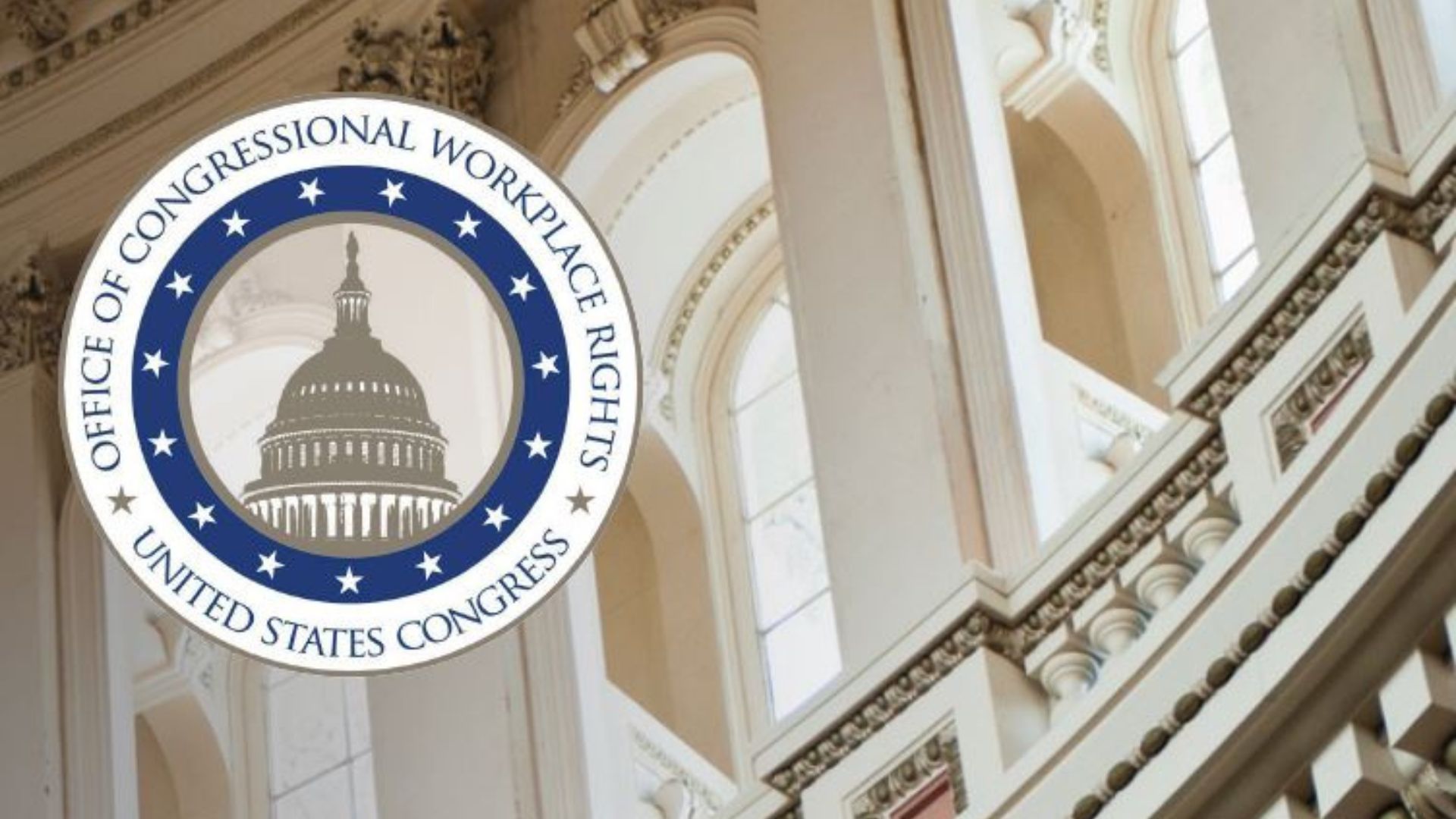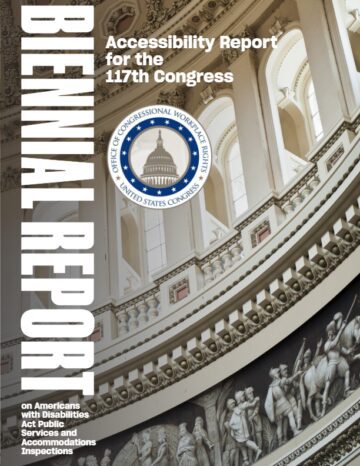Statement from the General Counsel
As provided in Section 210(f)(1) of the Congressional Accountability Act (CAA), 2 U.S.C. § 1331(f)(1), during each Congress, the Office of the General Counsel (OGC) of the Office of Congressional Workplace Rights (OCWR) is required to inspect legislative branch facilities for compliance with the public services and accommodations provisions of the Americans with Disabilities Act of 1990 (ADA). On the basis of these periodic inspections, the OGC must prepare and submit a report containing the results. 2 U.S.C. § 1331(f)(2).
The reports that we issue and make public at least once each Congress summarize the detailed reports we provide to legislative branch offices throughout the inspection period. During our ADA inspections, we work with offices to identify barriers to access by comparing existing conditions with the 2010 ADA Standards for Accessible Design (the most recent standards). When we find a condition that is not in compliance with the 2010 Standards, we make a finding identifying the condition as a barrier to access and report it as such. Not all barriers to access are necessarily violations of the ADA. In some cases, the condition may be in compliance with the 1991 ADA Standards, but not the 2010 Standards, making the condition “safe harbored” until the area is renovated or altered. In other cases, there may be technical feasibility or historicity issues that render compliance with the standard extremely difficult or not possible. In those cases, we work with the Architect of the Capitol (AOC) and other employing offices to find other ways to address the accessibility issues. While not all barriers to access are necessarily violations of the ADA, we believe it is important to identify all barriers to access so that these issues can be addressed when planning future projects.
Our work during the 117th Congress was extensive, including our first comprehensive inspection in the Thomas P. O’Neill Jr. House Office Building; the United States Botanic Garden, a popular destination for visitors; exterior routes, the accessibility of which significantly impacts visitors to the Capitol Hill campus as well as those passing through; House and Senate Member offices; and more. I am especially excited by our work with the Office of the Chief Administrative Officer (CAO) regarding the accessibility of House Member office furniture, detailed in the Spotlight section of this report.
As noted throughout this report, we continue to make substantial progress in improving accessibility on the Capitol Hill campus. The most recent ADA progress report from the AOC is attached to this report. It indicates how many barriers have been closed and how many have planned engineering solutions being developed. We once again thank the AOC and the other employing offices for working with us to develop and implement solutions to the barriers that have been identified.

